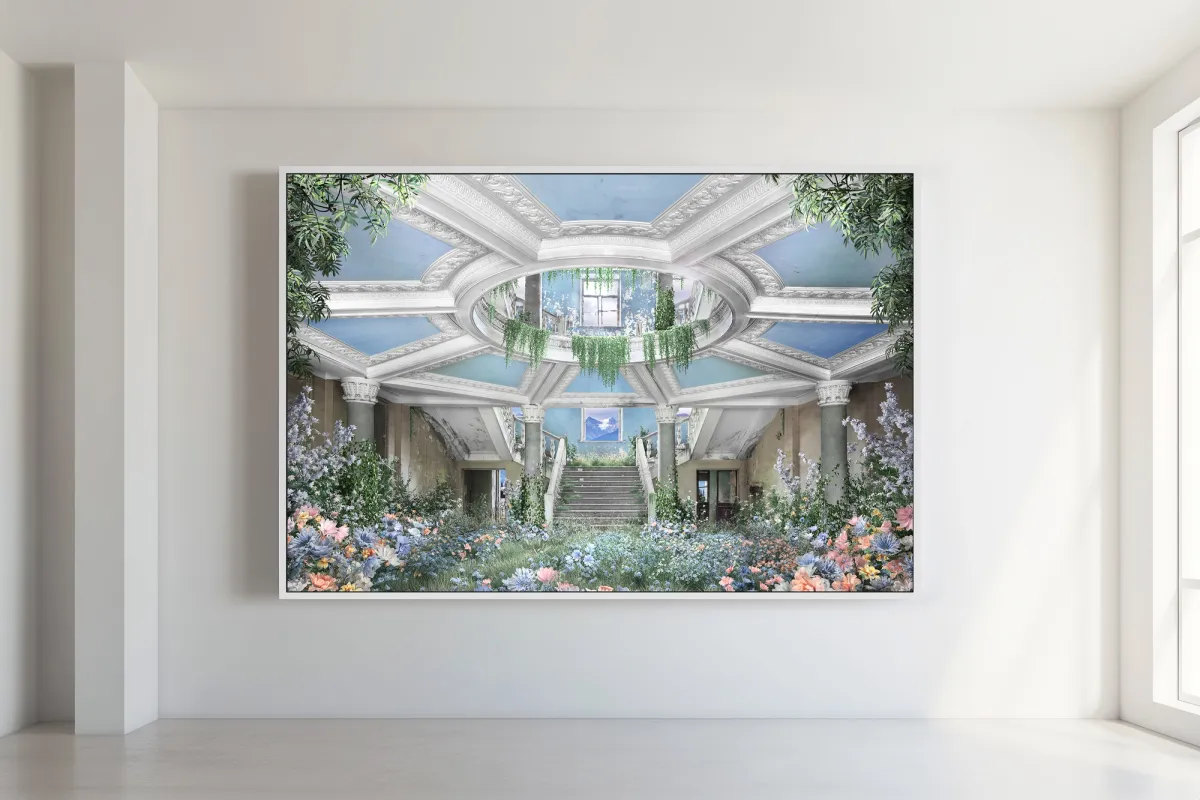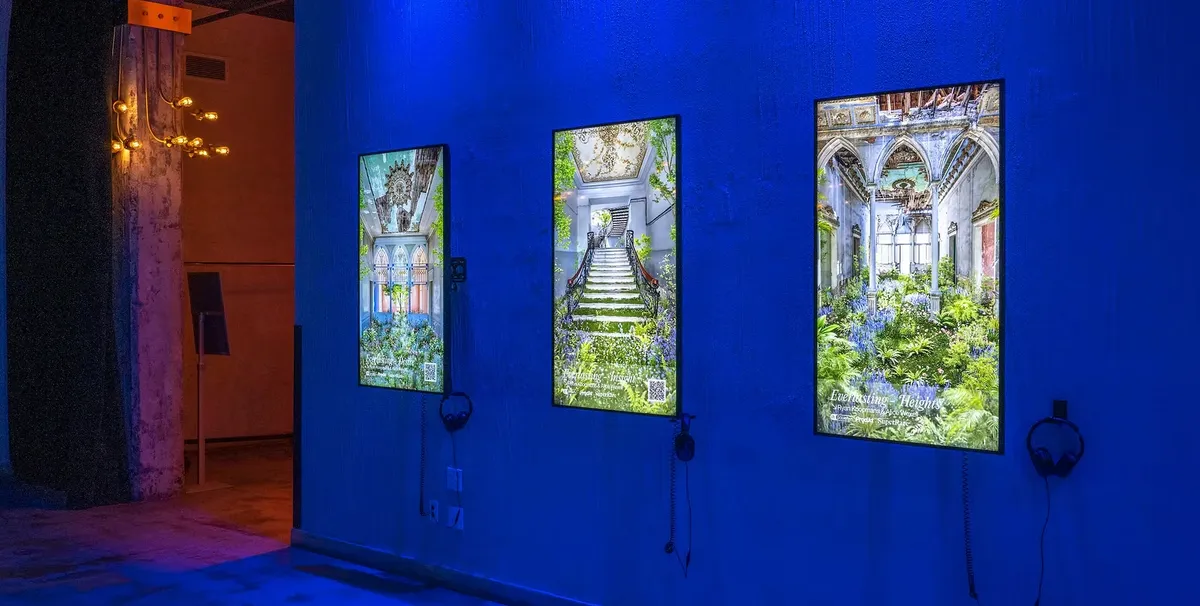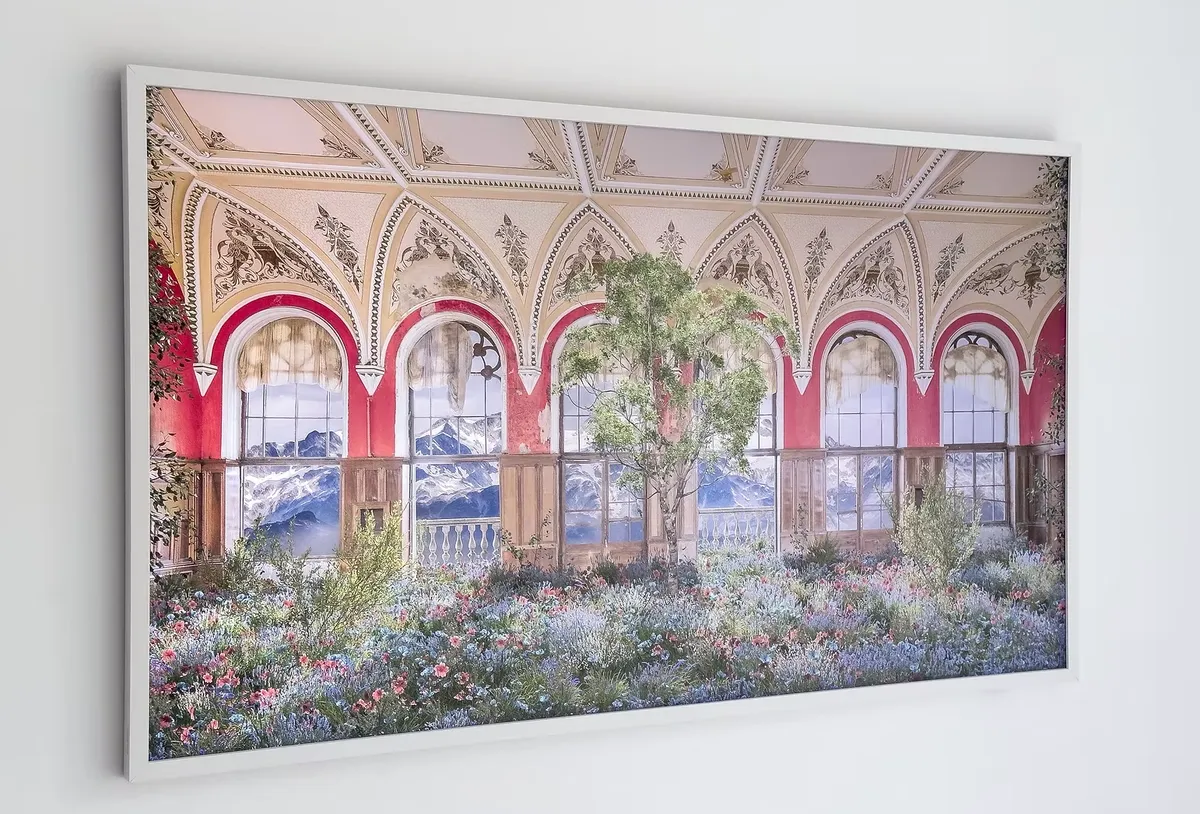Ryan Koopmans on Crafting Enduring Digital Art

Ryan Koopmans is a documentary photographer and digital artist. Along with his creative partner Alice Wexell, he developed The Wild Within, a 10-year project that explores the relationship between architecture and nature.
In this conversation, we cover:
- The experience at Christie's for Post-War and Contemporary Art Day Sale
- His experience selling with Sotheby's for Natively Digital
- What he would do if he were starting out again
- How a conversation with a collector led to his first sale and price discovery
A Conversation with Ryan Koopmans
Manifold: How did you get into this space?
Ryan: I have been working as a documentary photographer since 2008. At a certain point, I realized that the strict documentary photography I was doing had become creatively limiting. With my partner, Alice Wexell, who's my co-creator in this Web3 body of work, we started to creatively intervene on the documentary images that I'd taken from different architectural locations around the world, in particular this one town in the country of Georgia.
Fast forward to late 2020, we had the beginnings of this body of work ‘The Wild Within’ where we were animating and bringing these images to life. Around the same time, I began learning about art on the blockchain and was onboarded to SuperRare. We released our first pieces there in early 2021, and from that point on, I fell in love with the technology itself.

Insight on display with other pieces from The Wild Within in a solo show at 0x Society Gallery in Montreal, Canada.
Manifold: Do you remember your first collector?
Ryan: Yes. This was at the early wave of attention on NFTs in early 2021 and the collector reached out to me on Instagram, within the first 30 minutes of the piece being listed on Superrare.
We did our price discovery through having conversations with the collector, and giving them a feel for what our long term plans were. We wanted the price to be sustainable, but also increasing over time for the benefit of the longevity of the work and the collectors' investments themselves.
Our first collector has a great digital art collection, and also experience in traditional art collecting so he is very knowledgeable. I took, and still take, his opinions and sentiment seriously.
Manifold: I'm assuming as your collector base has grown. How do you keep in touch with folks?
Ryan: It's usually one on one, because we mainly only release 1/1.
Some collectors are more accessible and want to converse, and others more private. So it's a case by case basis, and there's some personalities that you develop a real relationship with, where you can ask them questions and get their insight on things.
I really enjoy these relationships as opposed to the gallery being a mediator, where you don't have any direct communication with the collectors, you may not even know who the collector is.
I like that you have the option to communicate. I think there's been extreme cross pollination between artist and collector sharing skill sets and knowledge that the other didn’t necessarily have exposure to before.
Manifold: What is The Wild Within?
Ryan: The Wild Within is an ongoing series by myself and Alice Wexell that reimagines abandoned architecture using photography, 3D animation, and digital sculpture. By introducing natural elements and motion into original images of forgotten interiors, we create works that explore the passage of time and the tension between decay and regeneration.
The project reflects my long-standing interest in the interplay between architecture and nature, an evolving investigation that now focuses on historical structures.
Manifold: How did you plan out this 10 year release schedule?
Ryan: We're already almost halfway through. On our website, you can see how we've released the work gradually over the years. Coming from a background in long-form documentary photography, it's common to spend 5, 10, even 15 years on a single project. So working on something long-term feels natural, it's inherent to both the subject matter and where I come from.
Right now, we're preparing for a major solo exhibition set for November 2025.
There are multiple large-scale physical works involved, and it's taken over two years of non-stop work to create the art.
I also do really like the idea of keeping the amount of artwork that’s available on the market limited. That doesn't mean we don't create a lot, but we're highly selective about what gets minted and put on-chain because once it's out there, it's out there forever.

Alice Wexell in front of Once Upon a Time in Prague Castle
Manifold: What auctioneers have you worked with?
Ryan: The two main non-Web3 auctions we've worked with are Christie's and Sotheby's. Most recently, we had a piece in Christie's Post-War and Contemporary Art Day Sale, which was a live auction. Our work, Ascend, was the only digital piece included, everything else was by major post-war and mid-century painters and sculptors
At Sotheby’s France, it was an online auction, but they also included a physical exhibition of the work in Paris, which added an important real-world component.

Manifold: How do these relationships with these auctioneers typically work? How did the first one happen?
Ryan: The first auction was with Sotheby’s France in 2023. I was at Art Basel when I introduced myself to the head of Sotheby’s, who said, “I love the work, send me an email.”
I followed up with a quick introduction and later sent a more detailed PDF of the series. He connected me with the team running the auction operations, and eventually one of our pieces was included in the Sotheby’s France auction.
It was the first time that this particular auction house showcased digital artwork in a physical format, which was a milestone. The work was on display at Sotheby’s in Paris, and from there, it became easier and there's less friction with doing another auction.
Manifold: So you and Sotheby's agree to do this. What happens after that? How do you decide on, like, if it's a reserve price, or the format or the marketing, kind of what is? What happens?
Ryan: There are certain standards that auction houses adhere to, and while some elements can be negotiated, there’s usually limited flexibility. Commission rates and other pricing structures are typically set.
To even be considered for an auction, there needs to be a track record of sales. Estimates and reserves are generally based on your recent activity. There’s no definitive formula: in some cases, setting a low estimate can help the piece outperform expectations and appear successful. But if the estimate is too low, it can negatively affect the perceived value of the work. So it’s a balance, there’s no one-size-fits-all approach.
When it comes to marketing, ideally you have some control. If it’s a primary sale, you want to say yes to an auction where you’re confident the house will give the piece proper attention and visibility.
That said, no one is going to care about or market your work as much as you do. You need to be ready to put in the effort. The most successful artists I’ve seen in auctions are the ones doing the legwork themselves, sharing, promoting, and making sure the right people see the work. Because with so much noise and content, things can easily go unnoticed unless you actively promote them.
Manifold: Can you think of someone who does it well?
Ryan: Brian Brinkman. I think that he's good at making engaging promotional materials and communicating what's happening in his ecosystem, as well as highlighting other artwork by artists that he appreciates.

Check out Ascend's Christie's listing
Manifold: All right, so walk me through what it's like to have your piece in a live auction at Christie’s.
Ryan: It’s super exciting and intense, especially because you’re dealing with a narrow window of time when the lot is up for bids. One of the most exciting aspects for me is the context, like the caliber of the other works featured in the auction. Some of my favorite artists from the past 100 years were included, which makes it all the more fun.
This particular auction took place at Christie’s in London, an awesome location and institution. What makes the experience also interesting iis the contrast between the anonymity of bidders, often calling in via phone or online, and the public nature of the event.
Another important part of the experience is the exhibition. The works are displayed in the showroom for a couple of weeks before the auction. Being able to see the piece in that context, observe people’s reactions, and be a fly on the wall as viewers engage with the work, is fascinating.
Manifold: What are you thinking when this happens? They call your name, the piece comes up... What are you feeling in that moment?
Ryan: It's nerve-wracking, you never know what's going to happen. It all moves so quickly, and there’s nothing you can really do except witness it, try to stay present, and appreciate the moment. For instance in the latest auction, the winning bid came from an online bidder who jumped in at the very last minute.
That’s the thing with auctions: you have to learn to accept that most bids come in during the final moments, sometimes literally in the last seconds. It’s wild. You hear them start to close it out: “Final call, final bid…” and you're just hoping that everything works smoothly from a technical side, that there’s no glitch or someone’s internet doesn’t cut out.
Even people I know who have planned to bid in other auctions sometimes couldn't participate because something came up, maybe they had to catch a flight or had other commitments come up. So you're always at risk of serious buyers not being able to follow through when dealing with a narrow window of time.
But on the flip side, there's always the exciting possibility that someone completely unexpected discovers the work and decides to jump in.
Manifold: This final bidder that came in, you said you didn't know them before, no, and do you have a relationship now?
Ryan: Yeah, so that piece came with a physical component, it was an Ordinal on Bitcoin, but there was also a physical artwork involved. Since the physical piece could be produced at a custom size requested by the collector, an exception was made, and the artist and collector were put in touch to coordinate those logistics. Normally, the collector would remain anonymous, and we wouldn’t be in direct contact.
But in this case, because of the nature of the physical component, we were connected and ended up forming a relationship. That’s not the standard, though. Typically, you wouldn’t know who the collector is, and there wouldn’t be any communication with them, that would be the more common scenario.
Manifold: How do you think about marketing now?
Ryan: I think what I’ve always believed is that, rather than focusing on gamification or various mechanics, the best thing I can do for the collectors, and for the work itself, is to increase its awareness, prestige, and the caliber of the contexts in which it appears.
And by “awareness,” I don’t mean having the work in every wallet to maximize exposure. I mean aligning it with respected institutions, platforms, or curatorial frameworks. That kind of affiliation feels meaningful and, in turn, uplifts the work. As the work grows in recognition, it also benefits those who have collected pieces over time.
For example, one of our works entered the National Art Collection of Sweden, it’s now part of the country’s official state collection, which means it can’t be sold. Similarly, inclusion in museum collections or being acquired by prominent collectors adds cultural weight to the project. That kind of elevation is, in my view, the most effective form of long-term marketing: allowing the work to live an interesting, evolving life.
Of course, there are limits. We do spend time online, maintaining social media, keeping Twitter or Instagram current, having a well-organized website, all of that is important. But I also think there’s real value in showing up at physical events. Face-to-face connection and relationship-building have power. I consider all of this part of the marketing process: living authentically, being present in the ecosystem, and supporting the growth of the work so that it continues to reach broader and more impactful contexts.
Manifold: Here's a more fun one. If you had to start again from tomorrow, knowing what you know about this space, no audience, no budget, what? How would you kind of take things off?
Ryan: That's a good question.
If I were to do it all again, there’s nothing I would outright avoid, but there are definitely things I’d double down on, things that have proven to be especially good to focus on.
One of the most unique and important aspects of this space is the relationship with other artists. That sense of community is something I didn’t really experience in previous contexts. As a photographer, you’re often working solo, competing for clients, and it can feel isolating. Similarly, painters tend to spend long hours alone in their studios. But here, there’s a strong culture of feedback, support, and connection between artists, and I think embracing that, building friendships, sharing ideas, and staying connected, is something I’d absolutely prioritize again.
I’d also take the same thoughtful approach to what we mint. I’m all for experimentation, but I believe it’s important to be conscious of what you're putting out into the world. The way you construct your artistic identity matters, and it’s worth showing intention in what you create and why you create it.
That kind of deliberate attention to your work adds weight and clarity to your overall practice and that’s something I’d be sure to maintain.
Manifold: Where do you see yourself expanding?
Ryan: Producing physicals is something I’ve always been interested in. I see the token as the true proof of ownership, the source of value. Whoever owns the NFT holds the original. But there’s something meaningful about being able to live with the work in a physical space, whether it’s at home, in a business, or elsewhere. Having a large, tangible version on the wall adds a different kind of presence and impact. I think that’s really special. Even if there are multiple physical prints of the same piece, there’s still just one token, one true original, and that distinction matters.
Manifold: Why NFTs?
Ryan: Well, from the beginning, the core idea that excited me was the simple but powerful notion of digital ownership and authorship. Coming from the world of digital photography and Web2, there were always concerns over things like watermarks, or viral images circulating without credit. But with blockchain, that problem disappears. It's indisputable: you can clearly see what the original work is, when it was created, and who made it.
For me, using the blockchain is a way to consolidate and preserve digital works rather than relying on a website or a Tumblr that might eventually go offline. The concepts of provenance, authorship, and ownership of a digital file or asset, that’s really at the crux of my interest.